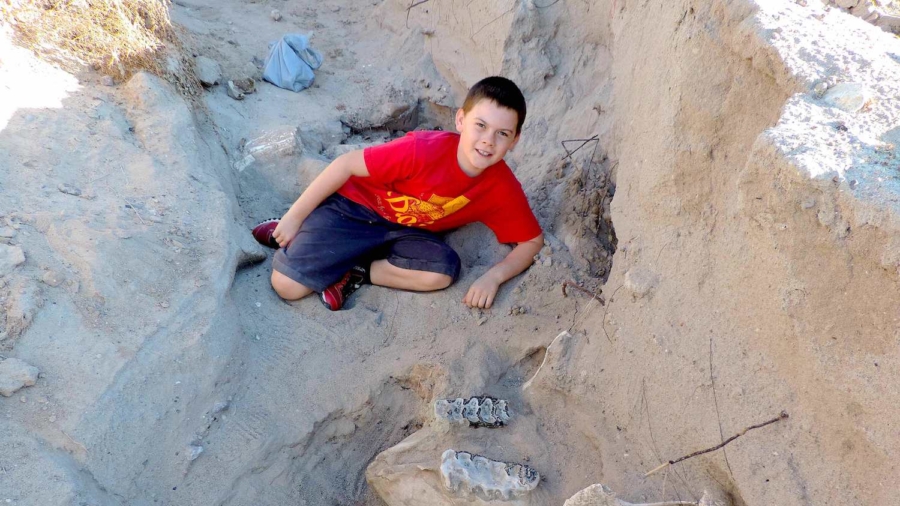An Iowa teenager found a prehistoric mastodon jaw bone while searching for arrowheads.
The bone is 30 inches long and comes from a juvenile mastodon, an animal that once roamed North America and was similar in appearance to today’s elephants, reported the Iowa City Press-Citizen.
The remains were found on a farm and given to the University of Iowa’s Paleontology Repository. The couple who owns the farm declined to be identified or have their farm named but said they had found mastodon remains on their property in the past.
The teen who discovered the bone was also not identified past being noted as a high school student.
A search for arrowheads on a southern Iowa farm turned up a massive mastodon discovery, instead. https://t.co/R3ZPlCDx5Y
— Des Moines Register (@DMRegister) May 15, 2019
Tiffany Adrain, the head of the repository, said that she and a team went to the land to get the bone and try to find evidence of where more bones could be on the property.
“We were notified a couple of weeks ago that somebody had found a fossil in the middle of a small river on the property,” Adrain told WHO-TV. “It was actually a high school student who had found the object, and the landowners contacted us and notified us [and] sent us photographs. Now we could tell right away it was a jaw bone of a mastodon. A mastodon is an extinct, large, hairy elephant.”
“Right away you know it’s mastodon because of these teeth,” she added.
This past Saturday, a University of Iowa paleontology team was on a farm in southern Iowa to pick up the bone of a prehistoric mastodon. https://t.co/XxKaGEjYl1
— WHO-HD Ch. 13 News (@WHOhd) May 14, 2019
Adrain said the remains are not uncommon in the state, found most often along bodies of water.
“I think people are finding stuff all the time,” she told the Press-Citizen. “Maybe they are out canoeing or fishing on a bank. Farmers, in particular, on the land can spot things pretty easily.”
Adrain is the repository’s only full-time employee. She had documented some 148,000 specimens with the help of students.


Mastodons
Mastodon bones may appear similar to mammoth bones but they’re actually different, Pamela Groves of the University of Alaska wrote in a blog post for the National Park Service.
“Despite the superficial resemblance, mastodons were distinct from mammoths. Mastodons were shorter and stockier than mammoths with shorter, straighter tusks. Mastodons were wood browsers and their molars have pointed cones specially adapted for eating woody browse. Mammoths were grazers, their molars have flat surfaces for eating grass,” she wrote.
“Recent evidence suggests that mastodon inhabited Beringia during a previous warmer episode, or interglacial, when there were trees or shrubs, probably [more than] >75,000 years ago.”
According to the New York State Musem, mastodons preferred to live in wooded areas where they could find some of their favorite foods, including coniferous leaves, twigs, and shrubs.
“American mastodon most likely lived in small mixed herds that included adult females and their young. Males, upon reaching sexual maturity at about the age of 10, would then separate from the herd and live a more solitary life,” the museum stated.


